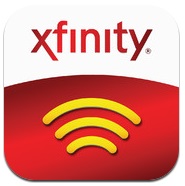Comcast's Wi-Fi Hotspots Outperform AT&T's and Boingo's: Study

Comcast’s public Wi-Fi hotspots outperform those from AT&T and Boingo Wireless by a wide margin, according to a four-city competitive analysis (PDF) conducted by Allion USA.
Allion held the study in four cities -- Baltimore, Boston, Philadelphia, and San Francisco – and based its findings on a total of 2,800 data samples taken with six different Wi-Fi client devices (Acer and Macbook laptops, the iPhone 5, Galaxy SII smartphone, and the iPad 4 and Google Nexus 10 tablet).
Generally, upstream speeds were comparable between the providers, though "Comcast still exhibited up to 3x faster throughput than others," Allion noted.
The differences were more pronounced in the downstream. AT&T’s and Boingo’s hotspots showed a range of 1 Mbps to 4 Mbps, “rarely exceeding” 5 Mbps, Allion said. Comcast’s hotspots, in comparison, “frequently exhibited” downlinks of 10 Mbps, and, on occasion, 20 Mbps. Allion said its findings suggest that AT&T and Boingo hotspots are “rate limited to a low throughput,” meaning “Comcast hotspot users will most likely experience a smoother Internet streaming browsing experience.”
Allion said its findings suggest that AT&T and Boingo hotspots are “rate limited to a low throughput,” meaning “Comcast hotspot users will most likely experience a smoother Internet streaming browsing experience.”
Among some of the individual market tests, Comcast in Baltimore averaged 11.10 Mbps down by 3.39 up, versus Boingo (1.36 Mbps/2.22 Mbps) and AT&T (1.22 Mbps/1.54 Mbps).
The story was similar in Boston, as Comcast averaged 15.73 Mbps down by 3.85 Mbps up, compared to Boingo (4.90 Mbps/2.62 Mbps) and AT&T (1.20 Mbps/1.14 Mbps).
Multichannel Newsletter
The smarter way to stay on top of the multichannel video marketplace. Sign up below.
AT&T and Boingo were not immediately available to comment on Allion’s findings. Allion, however, acknowledged that its analysis of Boingo hotspots was “limited” because the majority of Boingo hotspots listed on its distribution map included third-party hotspots operated by other vendors.
Update: A Boingo spokesperson said the company would need more information on which locations were tested by Allion to provide a meaningful response. But he noted that every Boingo location is based on the contract terms of the venue owner. For example, some offer free service and a premium service side-by-side, with the free version usually time- and rate-limited.
“In some locations, the bandwidth is rate-limited mostly to ensure that each user gets an acceptable amount of bandwidth, unlike some locations that don’t manage their networks where it’s first-come, first served,” the spokesman added, noting that Boingo has roaming deals with more than 140 network operators globally, but only a “few hundred” of the 700,000 hotspots available to its customers are Boingo-operated hotpots.
Allion excluded T-Mobile and Verizon from the study due to a comparably lower number of available hotspots from the others studied.
Allion study also included testing of Google’s public Wi-Fi hotspots in Mountain View, Calif., which averaged 1.29 Mbps down by 470 kbps upstream. In San Francisco, Comcast clocked in an average of 7.91 Mbps/3.33, while AT&T averaged 1.01 Mbps/1.11 Mbps.
“These test results further underscore our ongoing commitment to provide customers with the best and fastest Internet experience possible – no matter how and where they choose to connect,” said Comcast SVP of business development Tom Nagel in a blog post.
Comcast and its “CableWiFi” roaming partners (Cablevision Systems, Cox Communications, Bright House Networks and Time Warner Cable) offer access to more than 150,000 hotspots to authenticated broadband customers.
Comcast has also lit up another 100,000-plus quasi-public Wi-Fi hotspots in DOCSIS-powered wireless gateways deployed in customer homes that are broadcasting a “xfinitywifi” SSID (service set identifier). That initiative currently limits access to authenticated Comcast broadband subs.
Comcast's Wi-Fi activity also has a big public policy angle. In July, Comcast’s Nagel told the Senate Communications Subcommittee that the FCC needs to loosen restrictions on the 5GHz band if Wi-Fi is to meet the anticipated demand of wireless broadband access.
On Friday, the FCC voted to streamline rules in the 60GHz band for backhaul.
